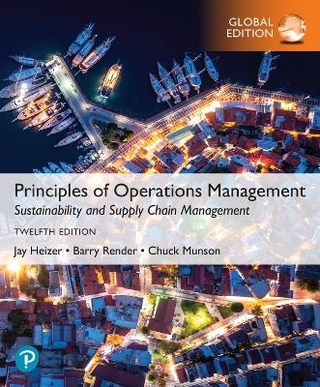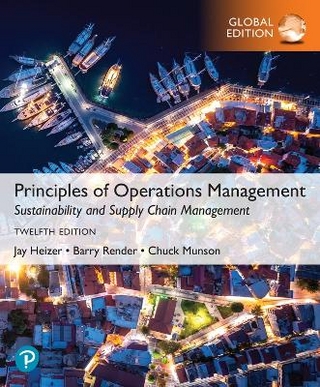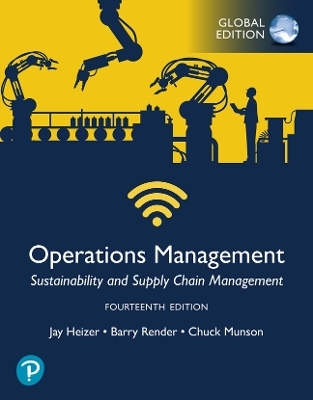
Service Systems Management and Engineering – Creating Strategic Differentation and Operational Exellence
John Wiley & Sons Ltd (Hersteller)
978-0-470-90020-8 (ISBN)
- Keine Verlagsinformationen verfügbar
- Artikel merken
C. M. Chang is on the faculty of the Department of Industrial and Systems Engineering at the State University of New York at Buffalo in Buffalo, New York.
Preface. Acknowledgments. Chapter 1 Introduction. 1.1 Introduction. 1.2 Services versus Products. 1.3 Service Sectors. 1.4 System-Integrative View of Service Enterprises. 1.5 Service Systems Engineering. 1.6 Skill Sets for Service Systems Professionals. 1.7 Roles of Technologists versus Managers/Leaders. 1.8 Preparation of Service Systems Engineers/Leaders. 1.9 Challenges in the New Millennium. 1.10 Conclusions. 1.11 References. 1.12 Appendices. 1.13 Questions. Part I The Functions of Engineering Management. Chapter 2 Planning. 2.1 Introduction. 2.2 New Business Technology Trends. 2.3 Types of Planning. 2.4 Strategic Planning. 2.5 Participants in the Planning Process. 2.6 Planning Roles of Engineering Managers. 2.7 Tools for Planning. 2.8 Planning Activities. 2.9 Some Specific Advice on Planning. 2.10 Planning in the Healthcare Industry. 2.11 Conclusions. 2.12 References. 2.13 Questions. Chapter 3 Organizing. 3.1 Introduction. 3.2 The Concept of Structure Following Strategy. 3.3 Activities of Organizing. 3.4 Organizing One's Own Workplace for Productivity. 3.5 Developing Organizational Structure. 3.6 Enhancing Corporate Performance by Organizing-Examples. 3.7 Cross-Functional Teams. 3.8 Delegating. 3.9 Establishing Working Relationships. 3.10 Informal Organizations. 3.11 Conclusions. 3.12 References. 3.13 Appendix-Definitions. 3.14 Questions. Chapter 4 Leading. 4.1 Introduction. 4.2 Leading Activities. 4.3 Deciding. 4.4 Communicating. 4.5 Motivating. 4.6 Selecting Engineering Employees. 4.7 Developing People. 4.8 Special Topics on Leading. 4.9 Conclusions. 4.10 References. 4.11 Appendices. 4.12 Questions. Chapter 5 Controlling. 5.1 Introduction. 5.2 Setting Performance Standards. 5.3 Benchmarking. 5.4 Talent Management. 5.5 Means of Control. 5.6 General Comments. 5.7 Control of Management Time. 5.8 Control of Personnel. 5.9 Control of Business Relationships. 5.10 Control of Projects. 5.11 Control of Quality. 5.12 Control of Knowledge. 5.13 Conclusions. 5.14 References. 5.15 Questions. Part II Business Fundamental for Service Systems Engineers and Leaders. Chapter 6 Cost Accounting and Control. 6.1 Introduction. 6.2 Service/Product Costing. 6.3 Application of ABC in Various Service Sectors. 6.4 Application of ABC in the Manufacturing Sector. 6.5 Target Costing. 6.6 Risk Analysis and Cost Estimation under Uncertainty. 6.7 Management of Overhead Costs. 6.8 Miscellaneous Topics. 6.9 Conclusions. 6.10 References. 6.11 Appendices. 6.12 Questions. Chapter 7 Financial Accounting and Management for Service Systems Engineers. 7.1 Introduction. 7.2 Financial Accounting Principles. 7.3 Key Financial Statements. 7.4 Fundamentals of Financial Analysis. 7.5 Balanced Scorecard. 7.6 Capital Formation. 7.7 Capital Assets Valuation. 7.8 Conclusions. 7.9 References. 7.10 Appendices. 7.11 Questions. Chapter 8 Marketing Management for Service Systems Engineers. 8.1 Introduction. 8.2 The Function of Marketing. 8.3 Market Forecast-Four-Step Process. 8.4 Market Segmentation. 8.5 Marketing Mix (Seven Ps). 8.6 Customers. 8.7 Other Factors Affecting Marketing Success. 8.8 Conclusions. 8.9 References. 8.10 Appendices. 8.11 Questions. Part III SSME Leadership in the New Millennium. Chapter 9 Service Systems Management and Engineering Leaders. 9.1 Introduction. 9.2 New Competency Model for Service Leaders. 9.3 Total Leadership. 9.4 Leading Change. 9.5 Leadership Styles, Qualities, and Attributes. 9.6 Leaders and Managers. 9.7 Factors Affecting the Promotion to Manager. 9.8 Leadership Skills for the Twenty-First Century. 9.9 Unique Contributions Expected of SSME Leaders. 9.10 Career Strategies for the Twenty-First Century. 9.11 "Take Charge" to "Get Success" Formulae. 9.12 Conclusions. 9.13 References. 9.14 Appendices. 9.15 Questions. Chapter 10 Ethics in Service Systems Management and Engineering. 10.1 Introduction. 10.2 Ethics in the Workplace. 10.3 Guidelines for Making Tough Ethical Decisions. 10.4 Corporate Ethics Programs. 10.5 Affirmative Action and Workforce Diversity. 10.6 Global Issues of Ethics. 10.7 Philosophical Approach of Addressing Ethics Issues. 10.8 Conclusions. 10.9 References. 10.10 Questions. Chapter 11 Knowledge Management. 11.1 Introduction. 11.2 Basics of Knowledge Management (KM). 11.3 Management of KM Programs. 11.4 Knowledge Management Practices in Service and Manufacturing Sectors. 11.5 New Frontiers of Knowledge Management. 11.6 Conclusions. 11.7 References. 11.8 Questions. Chapter 12 Innovations in Services. 12.1 Introduction. 12.2 Creativity and Creative Thinking Strategies. 12.3 Fundamentals of Innovation. 12.4 Innovation Management. 12.5 Selected Innovation Practices in the Service Sectors. 12.6 Conclusions. 12.7 References. 12.8 Appendices. 12.9 Questions. Chapter 13 Operational Excellence-Lean Six Sigma, Web-Based Applications, and SOA. 13.1 Introduction. 13.2 The New Revolution in Productivity. 13.3 Lean Six Sigma for Services-The SERVICE Model. 13.4 Internet-based Applications for Service Management. 13.5 Web Services. 13.6 Service-oriented Architecture (SOA). 13.7 Conclusions. 13.8 References. 13.9 Questions. Chapter 14 Globalization. 14.1 Introduction. 14.2 Global Trade and Commerce. 14.3 The Great Philosophical Debate about Globalization. 14.4 New Opportunities Offered by Globalization. 14.5 Preparation for Globalization. 14.6 Past Practices Related to Globalization. 14.7 Developing Global Strategies for Service Businesses. 14.8 Future Trends. 14.9 The Global Challenges Ahead. 14.10 Conclusions. 14.11 Summary Remarks for the Text. 14.12 References. 14.13 Questions. Appendix: Selected Cases Relevant to Service Systems Management and Engineering. Index.
| Erscheint lt. Verlag | 22.4.2010 |
|---|---|
| Verlagsort | Chichester |
| Sprache | englisch |
| Maße | 150 x 250 mm |
| Gewicht | 666 g |
| Themenwelt | Technik ► Elektrotechnik / Energietechnik |
| Technik ► Maschinenbau | |
| Wirtschaft ► Betriebswirtschaft / Management ► Logistik / Produktion | |
| ISBN-10 | 0-470-90020-2 / 0470900202 |
| ISBN-13 | 978-0-470-90020-8 / 9780470900208 |
| Zustand | Neuware |
| Haben Sie eine Frage zum Produkt? |
aus dem Bereich


